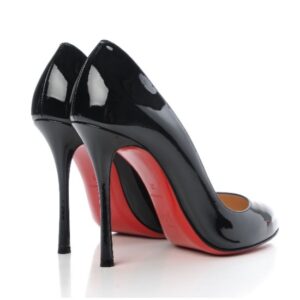
Another high-profile Louboutin case, although this time it’s less about the protection of the red sole as such than the liability of online retail platforms. The Court of Justice (CJEU) handed down a preliminary ruling in a case involving Christian Louboutin on the one hand and Amazon on the other, one referred from Luxembourg and the other from Belgium (C-148/21, C‑184/21). After seeing that Amazon frequently displayed ads for counterfeit red-soled shoes, the designer sued Amazon in Belgium and Luxembourg for infringement. The claim included Amazon’s activities as an online platform for third-party sellers, which involved supplying sellers with storage and shipping services. Louboutin alleged that Amazon’s advertising services may make consumers who use the online marketplace think that the ads for the goods in question do not come from third-party sellers but from the operator of the marketplace, and that Amazon uses the Louboutin trademark in its own advertising.
Preliminary questions were referred to the CJEU for clarification as to whether and under what circumstances Amazon might be held directly liable for trade mark infringement stemming from a third-party seller’s advertisement, bearing in mind that the CJEU already answered a related question regarding Amazon’s storage services in Coty v. Amazon (C-567/18, 2 April 2020) in Amazon’s favour.
This time, the outcome was less favourable for Amazon. The CJEU presented the following factors to consider when determining an online marketplace operator’s liability for trade mark infringement.
- The operator of a marketplace for third-party sellers can be considered to be using the sign identical to a trade mark appearing in a third-party seller’s advertisement when the average consumer might get the impression that this operator is marketing the infringing goods in its own name and on its own account. However, providing the marketplace per se does not amount to use by the operator; infringing trade mark use requires use in the infringer’s own commercial communication.
- Relevant facts are Amazon’s consistent presentation of the offers for sale published on its website, displaying its own advertisements alongside those of third-party sellers, and displaying its own logo as a renowned retailer on all of those advertisements. The presentation of the advertisements matters “both individually and as a whole” (para. 49).
- Advertisements must be presented in a way that a user may readily distinguish between offers made by the marketplace operator on the one hand and third-party sellers on the other (para 50).
- Marketplace operators must make ‘a clear distinction’ between the marketplace services and using the trade mark for its own commercial purposes (para. 51)
- When Amazon associates with the various offers, originating from itself or from a third party, without distinction as to their origin, a reference such as “best sales”, “most requested” or “most offered”, in particular for the purpose of promoting some of these offers, such a presentation is likely to reinforce the impression that the products are marketed by Amazon, in its own name and on its own behalf (para. 52).
- Another element that contributes to the appearance of a link is the fact that Amazon provides third-party sellers with additional services such as addressing user inquiries, storing and shipping third-party products, and handling returns of such products (para. 53).
The definition of infringing trade mark use, especially in the case of ‘middle men’ and platform operators, continues to give rise to legal discussions. In contrast to the case of L’Oréal v. eBay (C-324/09) and the aforementioned Coty case, the CJEU was asked about the fact that the online sales website in question included sales both from the site’s owner and the online marketplace. The CJEU stated unequivocally that it was for the national courts to determine whether Amazon had infringed on Louboutin’s trademark, but it did establish a much-appreciated guideline for when to ascribe trade mark infringement to online marketplace operators. It differs from the Advocate General’s decision in this instance and provides a view of “trade mark use” that is less restrictive and may provide effective consumer protection against the risk of confusion as well as the counterfeit (or knock-off) market for luxury products.
_____________________________
To make sure you do not miss out on regular updates from the Kluwer Trademark Blog, please subscribe here.


